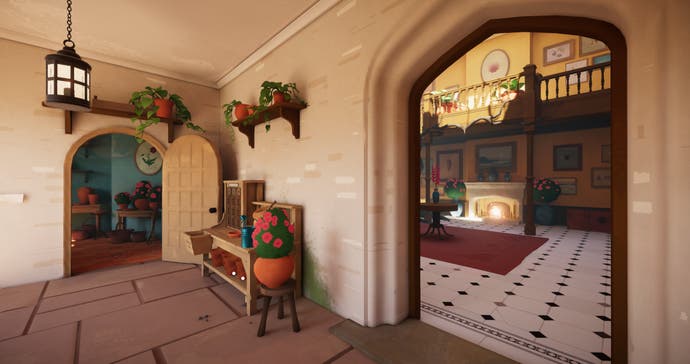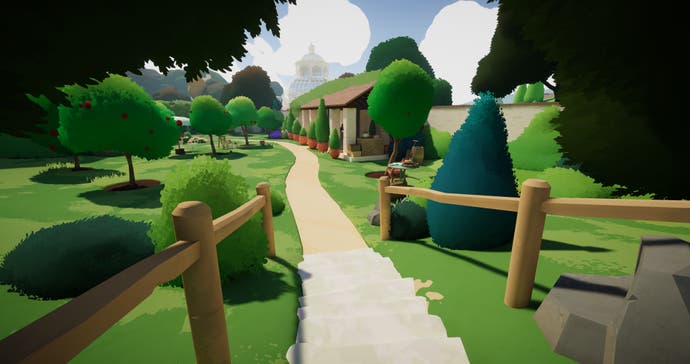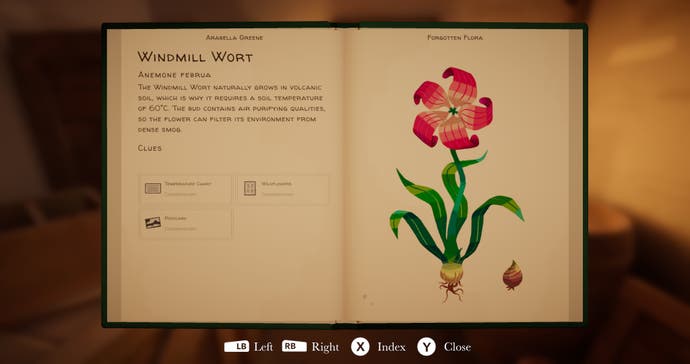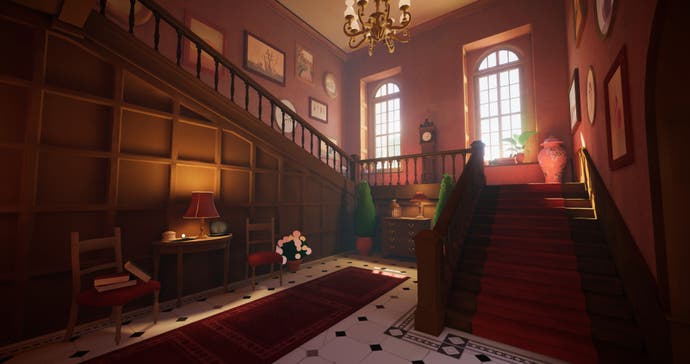[ad_1]
If you’ve ever been into plants, you’ll know, outside their natural habitat, they’re inherently a bit of a puzzle. Getting them to flourish is its own kind of game as you sleuth out and replicate precisely the right living conditions – the correct mix of soil, the perfect amount of light, the proper watering schedule, sufficient humidity, and whatever the bloody hell it is you want from me Calathea zebrina – that’ll keep them happy and healthy and, hopefully, drama-free. Get it wrong and you’ll end up with a shrivelled botanic tragedy glaring accusingly at you from the windowsill before it wilts its last wilt out of pure spite; do it right and you’ll have a beautiful bit of nature in your home to enjoy and admire for years to come.
Botany Manor taps perfectly into this endlessly rewarding struggle to create a tiny corner of artificial perfection for nature, whisking players back to Somerset, England, and an almost impossibly Mediterranean summer’s day in 1890. Here, they’ll experience the world and life of retired botanist Arabella Greene in a genteel puzzler structured around completing an Herbarium – that’s a book of pressed plants for scientific study, if you’re also new to the word. It’s a wonderfully peaceful, soothingly unhurried endeavour – a seamless blend of serene first-person exploration and deductive brain teaser – that asks players to poke around the titular house and its vibrant, sprawling gardens in search of clues that, when combined and cross-referenced, reveal how plants in the Herbarium bloom out in the wild. And with the ‘how’ assembled, the next step is to put that knowledge into action, potting up newly procured seeds and figuring out how to replicate the process using artificial means.
And it’s quietly brilliant stuff – a multi-part chain of naturalistic discovery and deduction that flows gracefully, organically, often across multiple areas of the house. A postcard tucked away on a nightstand might, to give an obfuscated example, detail a summer holiday destination where a friend of Arabella’s recently encountered an unusual flower; a wallchart hung in an adjacent room might conveniently map out the seasonal temperatures in a number of nearby regions. Connect the dots and suddenly the heater on the table in the corner, sporting an adjustable temperature gauge and space enough in front to place a freshly potted seed, suddenly becomes a potentially useful tool for your botanical trials. It gets more complicated than that, of course; later segments (Botany Manor’s several-hours-long runtime is split into five acts, each introducing new areas of the house and new plants to investigate) take place across increasingly vast spaces, requiring players to juggle multiple Herbarium entries at once – and it can take some canny thought to match the correct clues with their corresponding plants before you can even begin to consider turning that newly learned theory into practice and get your seeds to bloom.
Botany Manor is, then, a puzzle game that plays out like a detective game, so it seems fitting that – as a kind of murder mystery in reverse where the trail of clues leads to flourishing life rather than death – it all unfolds in the grandiose sprawl of a stately home. And Botany Manor, the house, is a wonderful creation, a believable progression of interiors and exteriors – from dimly lit libraries and extravagant dining rooms to prim summer gardens and cosy terraces with breath-taking views – all with real presence and poise. In truth, the house is perhaps Botany Manor’s only real character; Arabella is mute and unseen throughout, a bit of a non-entity despite the world around you ostensibly being a reflection of her personality, and the game’s small cast of supporting characters – friends, relatives, household staff that might occasionally pop up in a photograph or a letter – are so thinly sketched as to be almost indistinguishable. And a subplot that gradually gains prominence over the course of the adventure, of Arabella’s struggles to be recognised by the fiercely patriarchal scientific community of Victorian England, is just a bit too underdeveloped to properly hit its mark. Cosily inoffensive is Botany Manor’s preferred register, and its lightness of touch never quite strikes the kind of convincing note required form an emotional connection with its world.


But while its storytelling might be a little undernourished, its artistry is not, and Botany Manor, the place, is an absolute pleasure to explore. It isn’t, perhaps, quite the rich monument to existence as some of video gaming’s best houses – it’s doesn’t have the idiosyncratic intrigue of Edith Finch or the gradually unfurling secrets of Gone Home – but it still managed to convey a sense of a life well lived in its tangible, believable spaces. And while its aesthetic influence is obvious – it’s hard not to see The Witness in its brilliant skies and gently shifting flora – it’s a look repurposed with care and clear intention. Its colours are vibrant splashes of thriving nature, its spaces delicately, beautifully arranged, and as its rich soundscape of distant cuckoos and gently rustling leaves washes over you – Botany Manor primarily relies on diegetic sounds to create its convincing bucolic fantasy – the illusion is so complete you can almost smell the floral aromas and feels the warm summer’s breeze.



In fact, very little threatens to break Botany Manor’s idyllic spell, except, perhaps, a quirk of its Herbarium. While clues are named and recorded in your book as they’re discovered so they can be manually linked to their relevant entries, their contents are not. And as the game’s complexity escalates – by the time you’re juggling half a dozen bits of highly specific information for three or four different plants simultaneously – it’s perhaps a bit too easy to forget a pertinent detail, or even where you discovered it in the first place. Maybe the goal is to keep players engaged with the rich spaces around them rather than narrowing their focus to the pages of the book, but, to my ageing brain at least, the increasing mental burden, and the frequent need to traipse back across the house to retrieve a forgotten detail (I realise notepads exist in real life, but that seems like an inelegant, anti-immersive compromise when the Herbarium already exist in-game), was fatiguing in a way that felt at odds with Botany Manor’s otherwise accommodating design.
But even its occasional quirks are easy to forgive amid its otherwise ample charms. Botany Manor mightn’t be precisely scientific – its Herbarium of whistling, bioluminescent, lightning-borne plants are a very definite delve into more fantastical realms – but it still perfectly encapsulates that profound appreciation for the wonder of nature that lives in any plant lover’s heart. Sure, its rust-nibbling aquatic blooms and musically inclined ferns are fictions, but they’re no more bizarre than, say, bladderworts – millimetres-high carnivorous flower capable of generating, astonishingly, nearly 600 times the force of gravity to suck in their prey – or the Mimosa pudica, which shyly recoils its delicate fern-like leaves when touched. Perhaps an afternoon in Botany Manor’s company will inflame your own curiosity for nature, or perhaps you’ll simply be content to explore its sun-dabbled corners, solve its few clever puzzles, and enjoy the timeless pleasures of an enchanting summer’s day stroll.
[ad_2]
Source link



